Discoveries
We ducked in from the rain into an office building a few steps from Kumamoto Castle. Packed into a small elevator, we zipped up to Uotami, an izakaya chain. It was the first of several visits to izakaya during this trip, more times than I had in my lifetime previous.
Stepping out of the elevator into the restaurant, one is transported from concrete, traffic, and bright lights to warmth, wood, tatami, paper, and soft glowing lamps. Shoes are removed in one area and taken to a room with three walls of square-foot wooden lockers.
The characters on the key slide into a slot in a matching labeled door, which is pretty nifty since you don't have to remember the exact location of the locker, except when you pick a locker with a blank key like my uncle accidentally did. The characters had been rubbed clean. Fortunately, we remembered the general area so it took two tries before he was able to retrieve his shoes.
While I'm not a big fan of random sashimi, I don't mind salmon and shrimp, especially amaebi. When abalone was part of the order, I was excited to try this delicacy. Similar to scallops with a faint fishy flavor and crunchy, but more chewy and sweeter; it was a little tougher than I expected. The mollusks are located at the bottom, 6 o'clock, in the photograph below.
The next platter that arrived was basashi, a local delicacy in Kumamoto of thinly sliced raw horse meat. It was similar to raw beef (tried in Hida over 15 years ago), but tougher. With the shiso (perilla leaf) as a wrap and dipped in shoyu, basashi tasted like shiso dipped in shoyu. For me, shiso provides a sharpness to a dish but can overwhelm.
Next up was chicken yakitori - cartilage, skin, heart, thigh, and I think liver. There are specific names for different types of skewered meat. I once asked what yakitori is called when the skewered meat is not chicken (tori) and was informed that it has become a generic term for skewered meats, so it is acceptable to call skewered beef, beef yakitori.
Their gyoza was perfectly fried, crunchy, chewy, and not too garlicky. No complaints! What was memorable about this serving of gyoza from the hundreds of plates of gyoza I have had in my lifetime was the sauce.
The dipping sauce was not just the standard shoyu, rice vinegar, and rayu. The dab of green is yuzukosho, a citrusy peppery paste made from yuzu, chile peppers, and salt then fermented, a specialty of Kyushu. I fell in love with this paste and imaged the possibilities -- in potato salad, with grilled fish, in fried rice or noodles, ramen, ...so many dishes! It didn't take more than 2 seconds after I found a tube of yuzukosho, to purchase it. Why the delay? Question posed: How many?
Shared between 5 adults, this meal was a fantastic deal. It left me sated; cost less than $100 total; and broadened my palate by allowing me to try a number of new foods with little risk.
- Cassaendra
Uotami
1-22 Kamitori-cho
Kumamoto-shi, Kumamoto 860-0845
Kyushu
Japan
Tel: 096-324-2288


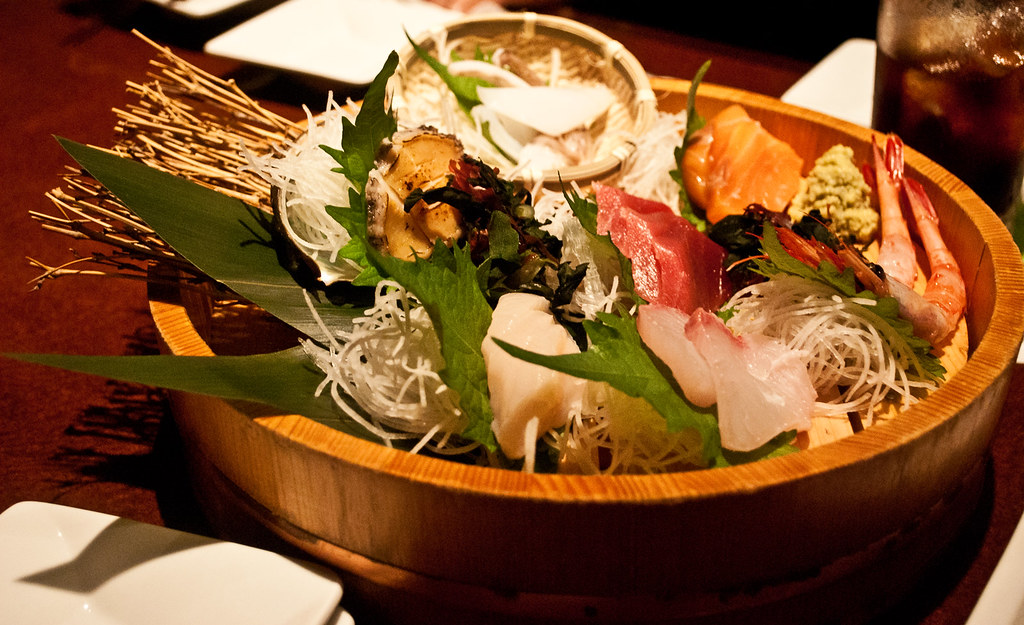
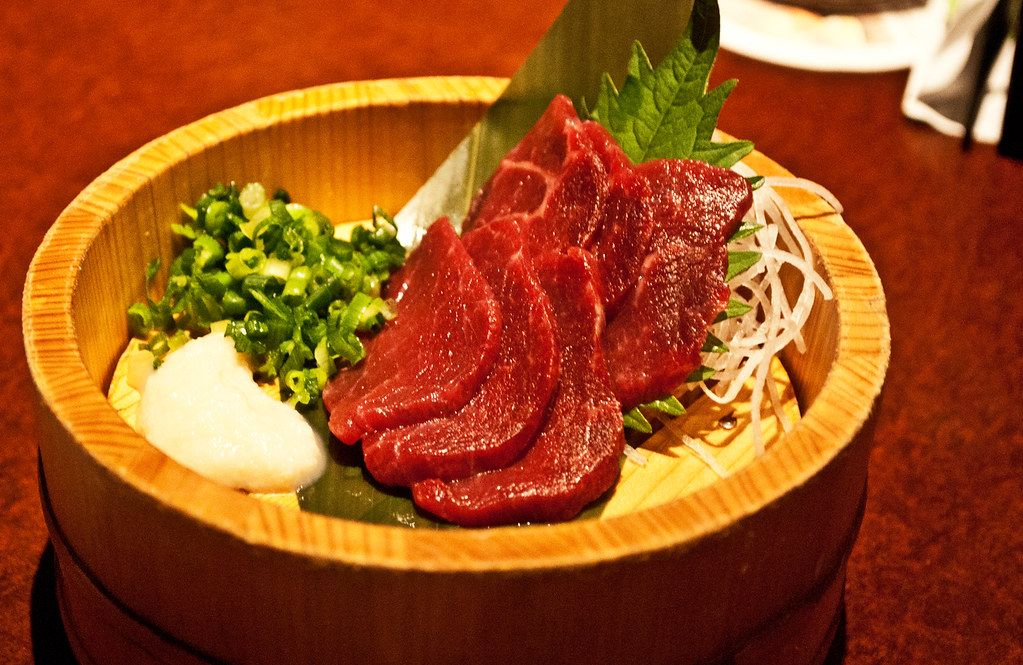
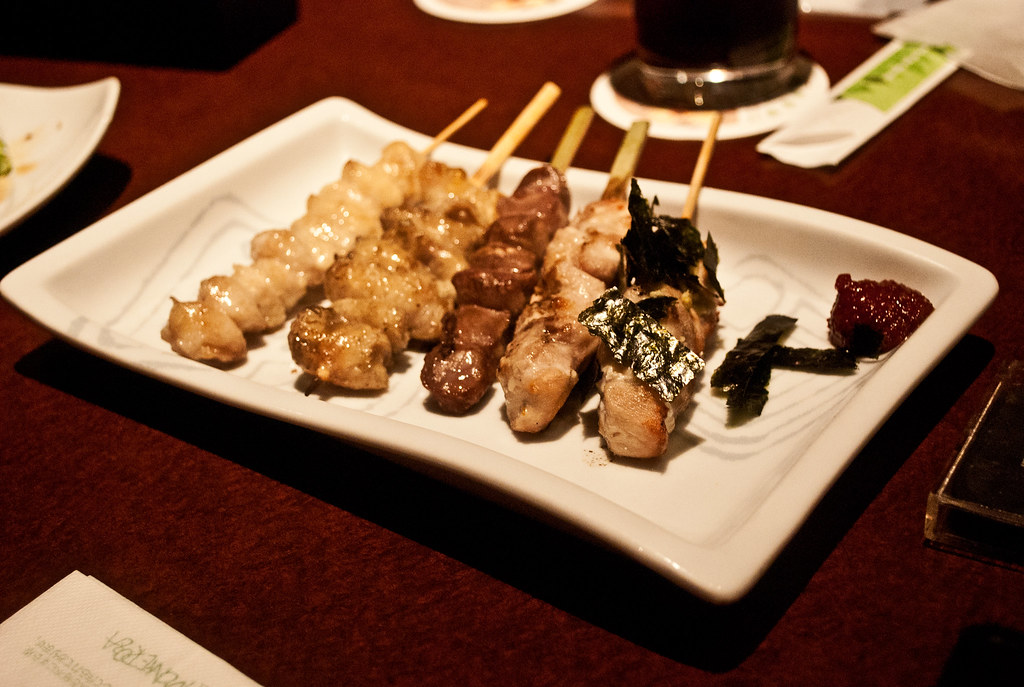
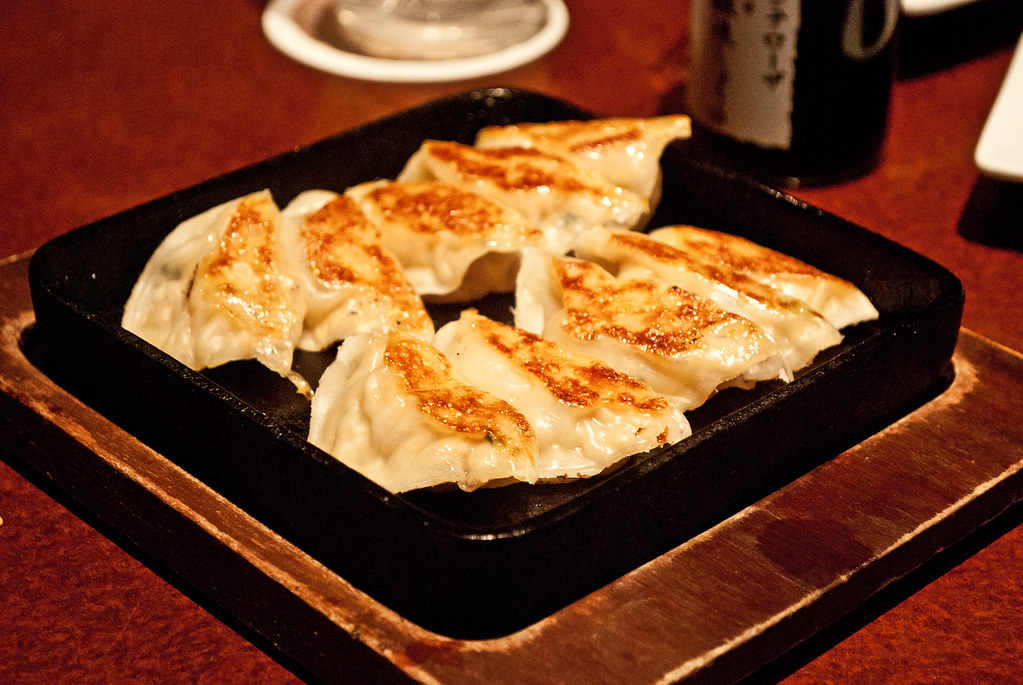
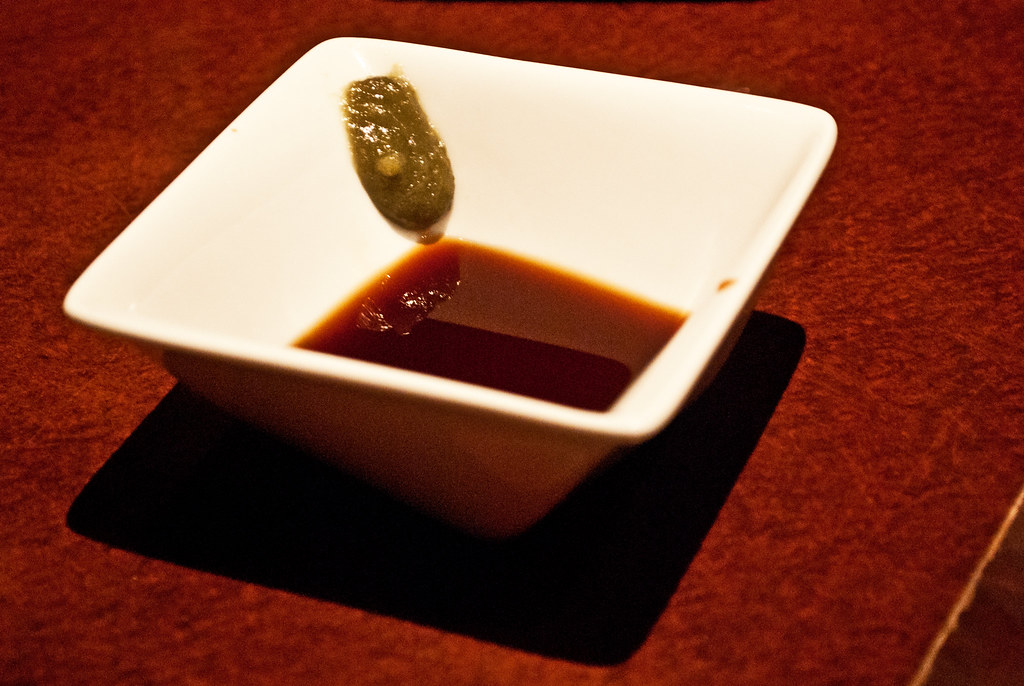




0 deep thoughts:
Post a Comment